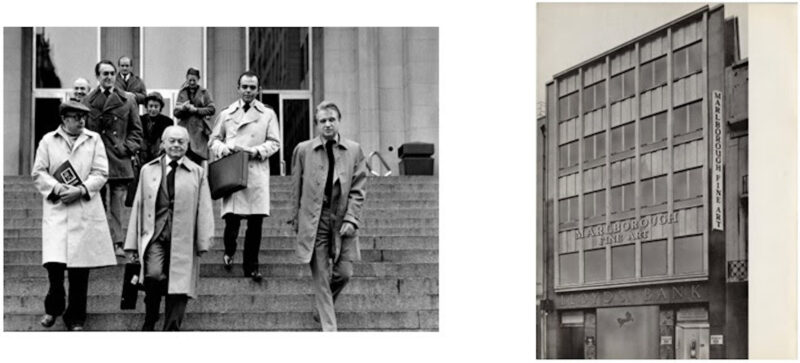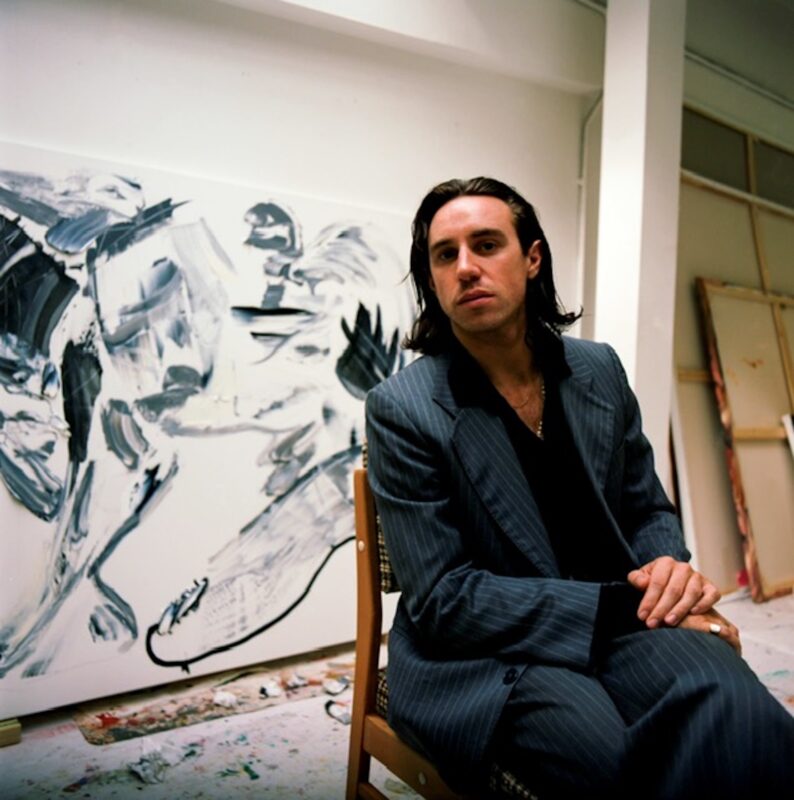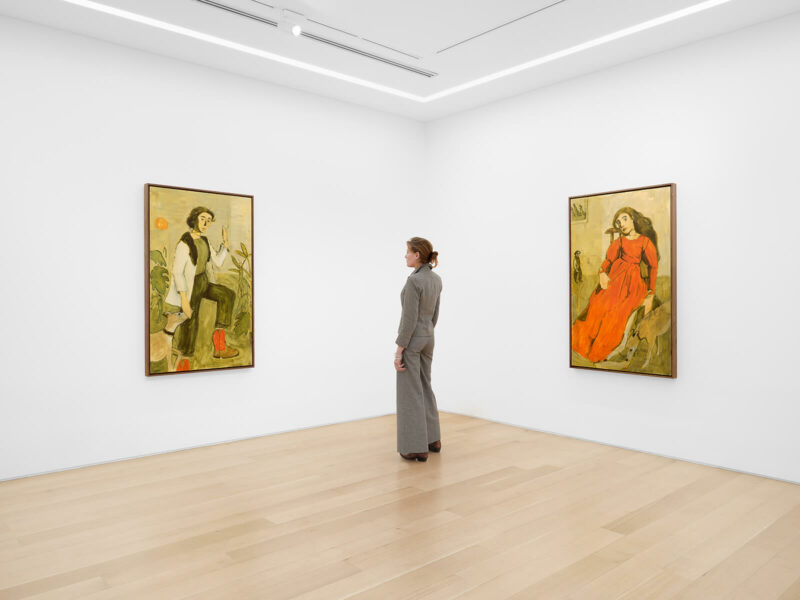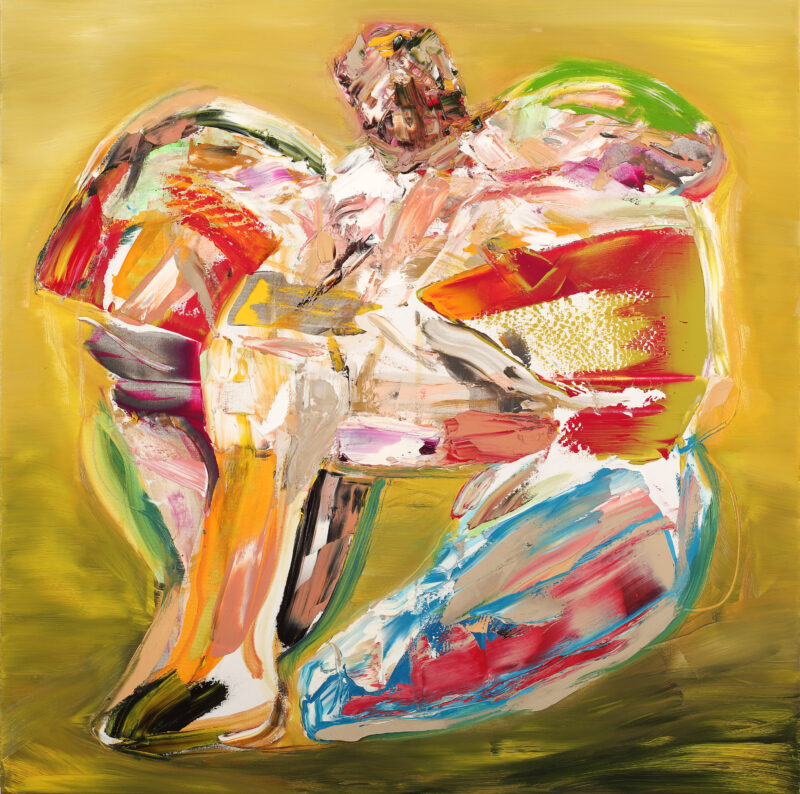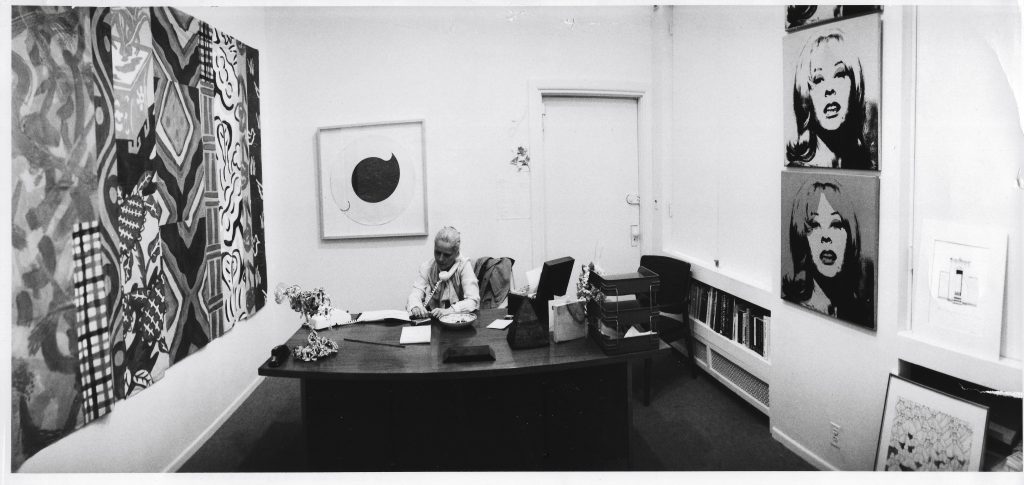
Holly in her office 1977. Courtesy of Thomas Solomon and Marlborough Gallery, 2019
Injecting some 70’s downtown New York nostalgia into Mayfair, Marlborough Contemporary have opened a show of selected works from actress-turned-art-dealer Holly Solomon’s Post-War collection, curated by her son Thomas. Showcasing 27 works by key artists who formed Solomon’s core group at the time, the show celebrates the relationships she nurtured with the art community around her, and her unique aesthetic when it came to collecting contemporary art.
A city on the brink of financial collapse, 60’s-70’s era New York was a vibrant but precarious social and political environment to be an artist in. Having started out as an aspiring theatre actress in the 50’s, Holly Solomon soon turned her attention to art, helping bring SoHo to the forefront of the city’s art scene and proving that she was capable of inspiring artistic creations, not just buying and selling them. In 1963 she began to collect works of Pop Art while the movement was still in its early days, commissioning works by the likes of Warhol and Rauschenberg. In 1969, the Solomons opened a performance and exhibition space at 98 Greene Street in SoHo, where poets, filmmakers and artists presented a range of innovative works. In 1975, as New York City officially declared bankruptcy and requested federal funding assistance, Holly opened her premises at Holly Solomon Gallery. In contrast to the Solomons’ private collection, this space was dedicated to under-represented and mixed media artists, such as Nam June Paik and William Wegman, and also helped to launch careers of young female artists such as s Laurie Anderson, Mary Heilmann, and Alexis Smith. In 1983 the gallery left the SoHo district to move to up to Fifth Avenue, only for Holly to return to the area in 1993 following her divorce from husband Horace Solomon, before closing in 1999. She briefly continued dealing art from a single room gallery at the Chelsea Hotel, where she was found dead in 2002.
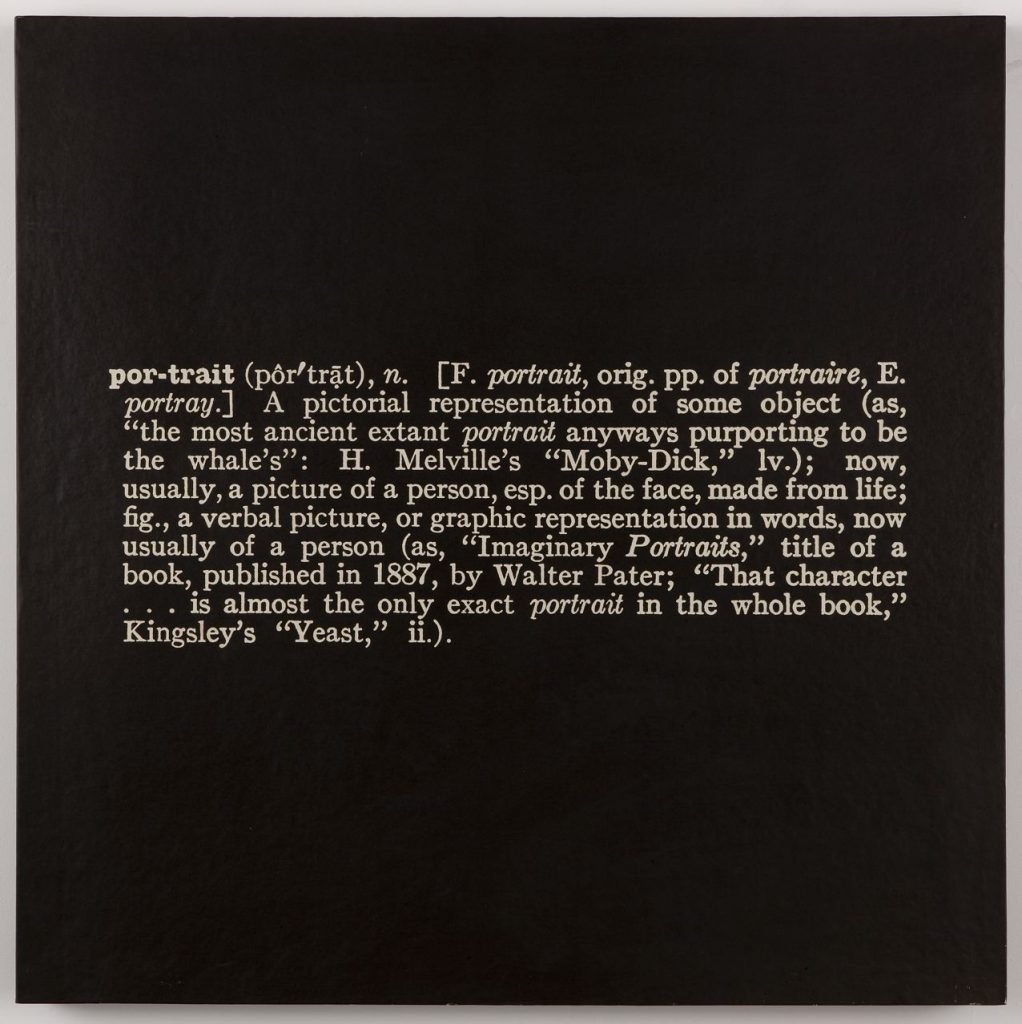
Joseph Kosuth, Art As Idea As Idea, 1968. Courtesy of Thomas Solomon and Marlborough Gallery, 2019
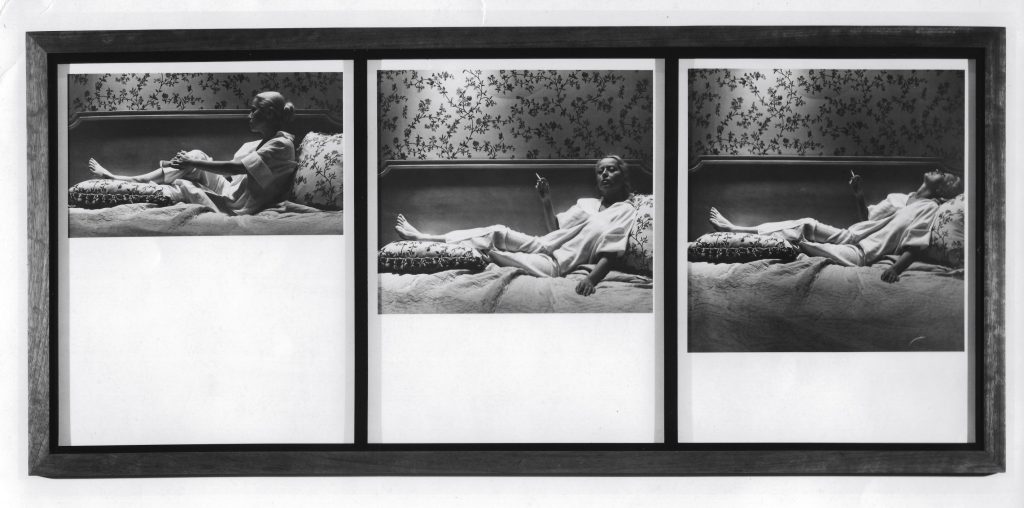
Portrait of Holly by Robert Mapplethorpe, 1976. Courtesy of Thomas Solomon and Marlborough Gallery, 2019
Amongst the featured works is Joseph Kosuth’s Art As Idea As Idea, the tautological exploration of the word ‘Portrait’, which is brilliantly displayed next to Mapplethorpe’s iconic triptych portraits of Solomon from 1976, depicting her reclining on a bed as she smokes a cigarette and follows the viewer around the room. She was also the subject of large scale portraits by both Lichtenstein and Warhol. These do not feature in the exhibition but Warhol’s gelatin silver print of Solomon from 1963 does, tucked away on a side wall and capturing the dealer’s exuberant personality in a single photo-booth strip.
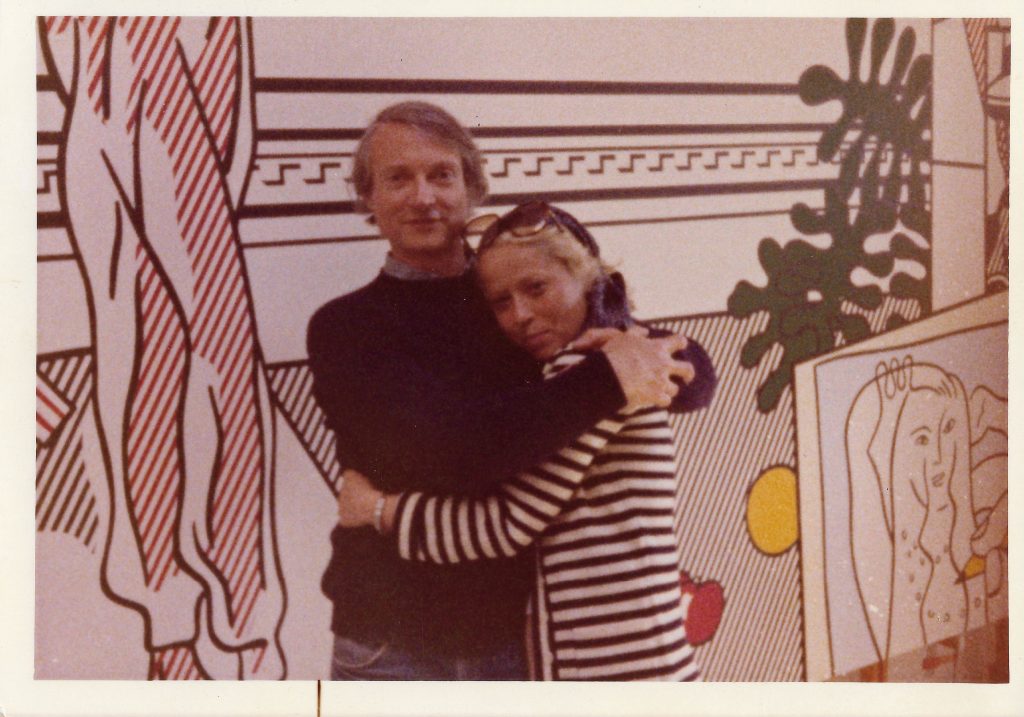
Holly and Roy Lichtenstein. Courtesy of Thomas Solomon and Marlborough Gallery, 2019
Some of the works were previously displayed in the 2014 exhibition celebrating the Solomon titled Hurray for Hollywood at the Pavel Zoubok Gallery and Mixed Greens Gallery in New York. Mixed Greens director Sergiovanni had worked as the director of Solomon’s gallery towards her later years and went on to help organise her estate after she passed away.
I caught curator Thomas Solomon at the show’s opening last week to ask him what his favourite pieces in the show are. He lists:
- Kim MacConnel’s Chicken Delight – a classic and inventive example of the pattern and decoration movement that Holly so championed at the time.
- Joe Zucker’s The Natchez vs Hop Bobin – He applauds Joe’s use of cotton balls dipped in acrylic stretched over canvas as “inventive and oddly pictorially beautiful”
- Gordon Matta-Clark’s Floors, Doors, Floors. This three-part photograph captures the beauty of abandoned urban history of that space.
- Gordon Matta-Clark’s Splitting sculpture, which he worked on with the artist in 1974, describing his relationship and vision as “extraordinary. Despite having only been active as an artist for about 8 years or so, he worked across all mediums and his work has had a huge amount of influence and importance.
- Nam June Paik’s Untitled – the TV frame with a static image of a crying figure is an eerie but poetic replacement for the expected moving image, commenting on the state of television in 1975 New York.
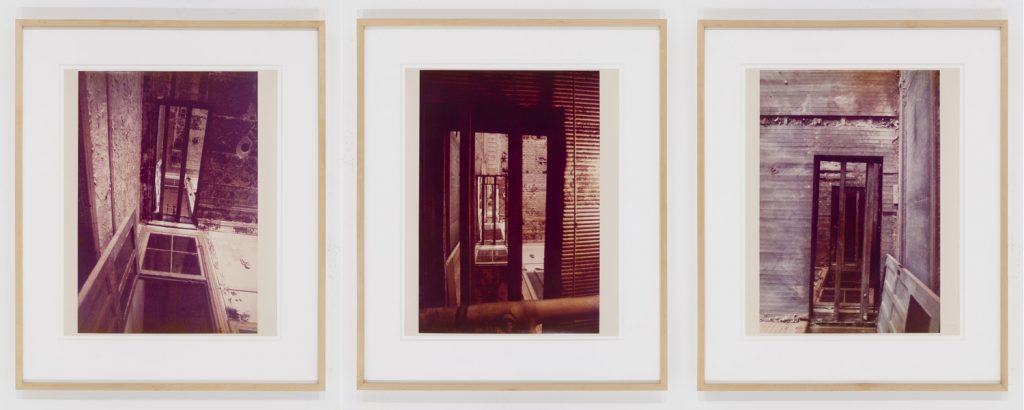
Gordon Matta-Clark, Doors Through and Through (Doors, Floors, Doors) 1 976. Courtesy of Thomas Solomon and Marlborough Gallery, 2019
Thomas himself now owns a gallery space in LA and frequently lends pieces from the collection to major international shows – the Laurie Anderson featured in the show was most recently on loan to the Barbican.
When asked what he would like for visitors to the show to take away the most he replied: “that it is necessary to support younger artists as through this support one gives back to the culture that you take from. Holly took risks and helped the community of younger artists develop their ideas and artworks to move art and culture forward”.
Selected Works from the Collection of Holly Solomon 1968-1981 runs until June 29th at Marlborough Contemporary. marlboroughcontemporary.com
Artists in the exhibition: Laurie Anderson, Robert Barry, Mary Heilmann, Valerie Jaudon, Christopher Knowles, Joseph Kosuth, Thomas Lanigan-Schmidt, Kim MacConnel, Robert Mapplethorpe, Gordon Matta-Clark, Richard Nonas, Dennis Oppenheim, Nam June Paik, Judy Pfaff, Alan Saret, Alexis Smith, Ned Smyth, Robert Therrien, William Wegman, Joseph Zucker
